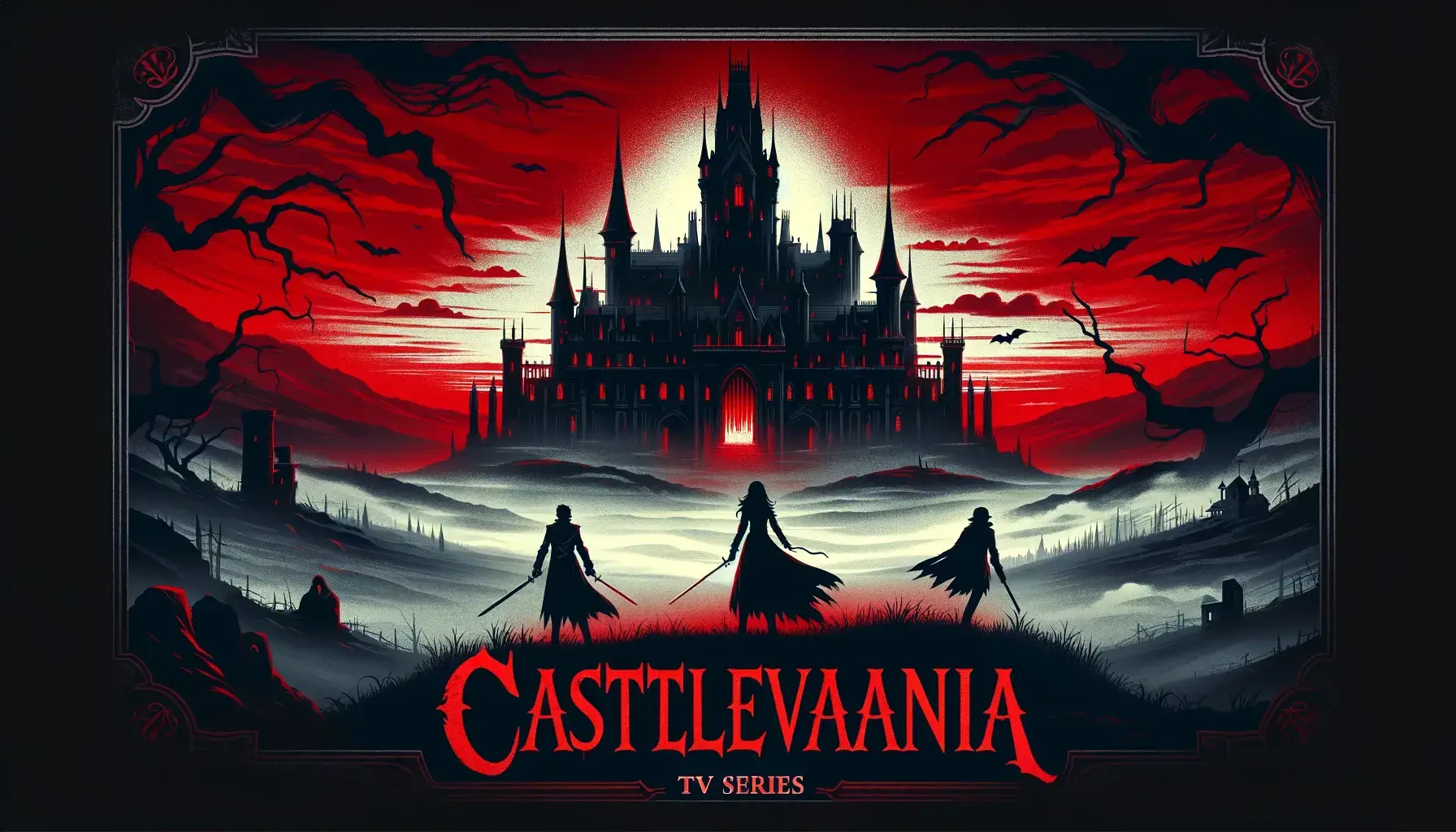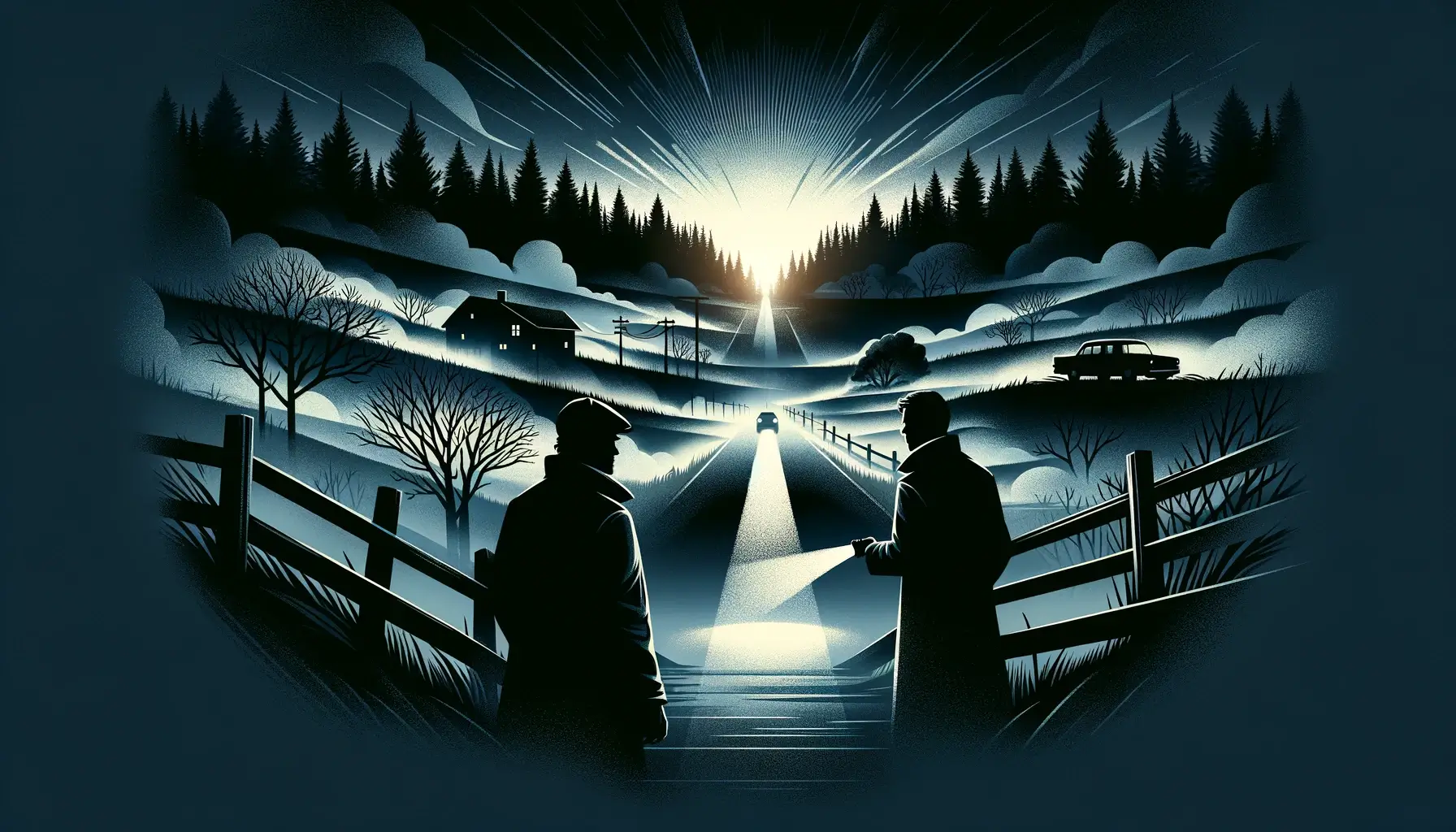The “Castlevania” TV series on Netflix has garnered considerable praise for its adaptation of the iconic video game franchise, successfully translating its gothic horror and complex lore into an engaging animated series. “Castlevania” stands out with its sophisticated animation style that blends the atmospheric essence of Eastern anime with Western animation sensibilities. The series’ art direction excels in crafting a visually compelling gothic world filled with dark, moody environments and detailed character designs. Each frame is carefully composed to enhance the storytelling, utilizing shadows and light to reflect the series’ somber tone. The animation shines especially during action sequences, which are fluid, dynamic, and satisfyingly brutal, fitting the series’ mature theme.
Season 1:
- Dracula’s Vengeance: The series begins with Dracula’s wife, Lisa, being burned at the stake after being falsely accused of witchcraft. Dracula, devastated and enraged, declares war on the people of Wallachia and vows to exterminate them with his army of demons and night creatures.
- Trevor Belmont: The story then introduces Trevor Belmont, the last living member of the Belmont clan, a disgraced family known for fighting monsters. Initially reluctant, Trevor eventually decides to fight Dracula’s forces.
- Meeting Sypha and Alucard: Trevor meets and allies with Sypha Belnades, a powerful magician, and Alucard, Dracula’s dhampir son who opposes his father’s genocidal campaign. Together, they resolve to stop Dracula and protect humanity.
Season 2:
- Dracula’s War Council: The second season explores Dracula’s grief and how it impacts his decisions. His war council, composed of vampires from around the world, has conflicting ideas about how to carry out the war against humans.
- The Trio’s Quest: Trevor, Sypha, and Alucard delve into the Belmont family’s archives to find a way to defeat Dracula. Their journey leads to acquiring powerful weapons and uncovering ancient secrets.
- The Battle Against Dracula: The season culminates in a fierce battle in Dracula’s castle, with strategic moves that involve both magical and physical combat. It ends with a poignant confrontation between Dracula and Alucard.
Season 3:
- Aftermath and New Threats: Following Dracula’s death, the characters face the consequences of their victory. Trevor and Sypha encounter new threats in the form of night creatures and corrupted religious figures, while Alucard struggles with loneliness and betrayal after opening his heart to others.
- Carmilla’s Plans: The vampire Carmilla seeks to fill the power vacuum left by Dracula, plotting to build her own army and establish a vampire-controlled territory.
Season 4:
- The Final Confrontation: In the final season, all the main characters face their ultimate challenges. Carmilla’s ambitions lead to a massive battle involving all factions. Meanwhile, sinister forces attempt to resurrect Dracula, leading to a series of dramatic and deadly confrontations.
- Resolutions and Farewells: The series wraps up the arcs of each main character, providing closure to their stories. The legacy of the Belmont family and the influence of Dracula on the world are both profoundly addressed.
Development and Conceptualization:
Origins and Adaptation:
-
- The idea of a “Castlevania” adaptation dates back over a decade before the series’ actual release. Initially conceived as a live-action film, it eventually evolved into an animated series to better capture the essence and expansive lore of the video games.
- Producer Adi Shankar acquired the rights and was instrumental in transforming the project into an animated series, believing that this medium would do justice to the source material’s dark, gothic atmosphere.
- Collaboration with Creators:
- Warren Ellis, a renowned comic book writer, was brought on board to write the entire series. Ellis crafted a narrative that, while rooted in the game series, particularly “Castlevania III: Dracula’s Curse,” also brought new depth to its characters and themes, making it accessible to viewers unfamiliar with the games.
Animation and Art Style:
Choosing the Animation Studio:
-
- Powerhouse Animation Studios, based in Texas, was selected to animate the series. The studio is known for its high-quality work on other animated series and was chosen for its ability to deliver the detailed and fluid animation that “Castlevania” demanded.
- Artistic Influence:
- The animation style was heavily influenced by Japanese anime as well as traditional Western animation, creating a unique blend that stands out in both action sequences and quieter, more dramatic scenes.
- The series features a dark color palette and detailed backgrounds that echo the gothic horror aesthetic of the video games, setting an appropriately eerie and foreboding tone.
Voice Casting and Character Development:
Casting Process:
-
- The voice cast was carefully chosen to match the series’ tone and character needs. Richard Armitage voices Trevor Belmont, bringing a gruff and weary yet ultimately heroic tone to the character. James Callis voices Alucard with a blend of melancholy and resolve, while Alejandra Reynoso voices Sypha, providing a spirited and strong-willed portrayal.
- Graham McTavish voices Dracula, delivering a performance that encapsulates the character’s formidable presence and deep sorrow.
Music and Sound Design:
Musical Composition:
-
- The score for “Castlevania” is crafted to enhance the gothic horror atmosphere, utilizing orchestral music that includes haunting choruses and intense, dramatic scores during battle scenes.
- Composer Trevor Morris was responsible for the series’ music, creating themes that both pay homage to the video games’ iconic scores and bring new auditory landscapes to the series.
Production Challenges:
Maintaining Consistency:
-
- One of the challenges in producing “Castlevania” was maintaining stylistic and narrative consistency across episodes and seasons, a task managed through close collaboration among the writers, directors, and animators.
- The series also had to balance fan expectations with the creative desire to expand the story and characters beyond the constraints of the original games.
Positive Reception:
Animation and Art Style:Viewers praised the animation quality, which skillfully blended influences from both Western and Japanese animation styles. The dark, detailed art style was highlighted as particularly fitting for the series’ gothic and horror themes, enhancing the overall atmosphere.
Narrative and Writing:The series was commended for its deep, engaging storyline, which expanded on the lore of the “Castlevania” games. Warren Ellis’s writing received particular praise for its sharp dialogue, complex character development, and successful adaptation of the game’s plot into a rich, narrative-driven series.
Character Development:Fans appreciated the complex character arcs, especially the portrayals of Trevor Belmont, Alucard, and Sypha Belnades. The dynamic between these main characters, along with a compelling Dracula, added a strong emotional core to the series that resonated well with viewers.
Voice Acting:The voice acting was another strong point, with the cast delivering performances that brought the characters to life in a memorable and impactful way. This added a layer of depth and authenticity to the series, making it more engaging for the audience.
Action Sequences:The action scenes were often highlighted as highlights of the series, showcasing smooth and intense animation that made the combat sequences thrilling to watch. The battle scenes were noted for their creativity and how they effectively used the series’ supernatural elements.
Criticism:
Pacing Issues:Some viewers noted pacing issues, particularly in the first season, which only consisted of four episodes. While the series was largely successful in developing its plot and characters, some fans felt that additional episodes in the initial season could have provided a more even narrative pace.
Complex Story for Newcomers:Newcomers to the “Castlevania” universe without familiarity with the games sometimes found the story complex and challenging to follow. However, this issue was less pronounced as the series progressed and provided more background and context.
Cultural Impact: “Castlevania” has been celebrated as one of the best video game adaptations to date, setting a high standard for how video games can be translated into other media. Its success has spurred discussions about potential for further adaptations of other games, particularly in the realm of animation.
“Castlevania” is a standout series in the realm of video game adaptations, characterized by its strong narrative, deep character arcs, and stunning animation. It not only satisfies fans of the games but also serves as a solid entry point for those new to the “Castlevania” universe. The series proves that with thoughtful adaptation and creative storytelling, video games can indeed translate into compelling television.




